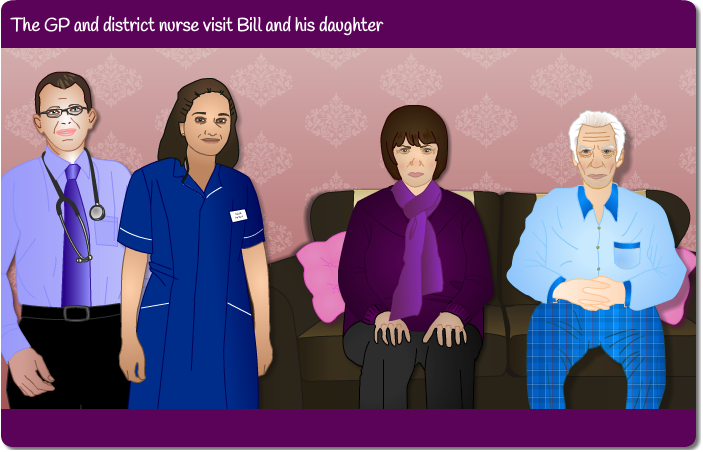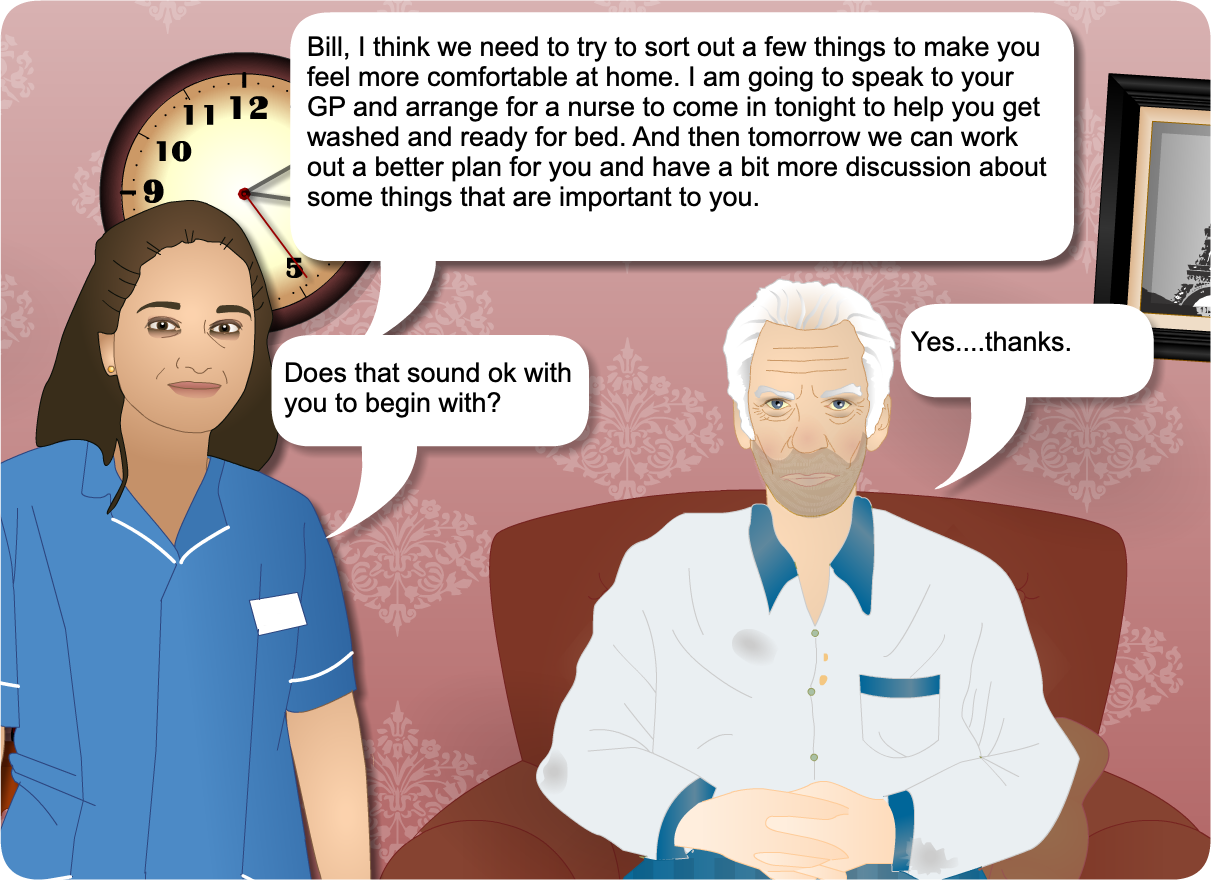
Bill’s GP Dr. Campie sends an email to the cardiologist Dr. Hilton (please note the following correspondence shows a brief summary of information relating to Bill to illustrate SBAR).
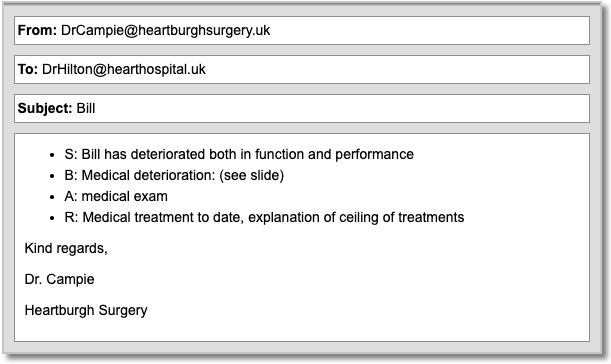
Dr. Hilton’s reply to Dr. Campie
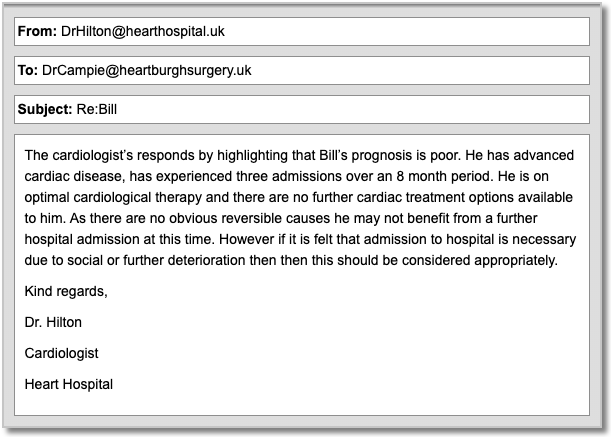
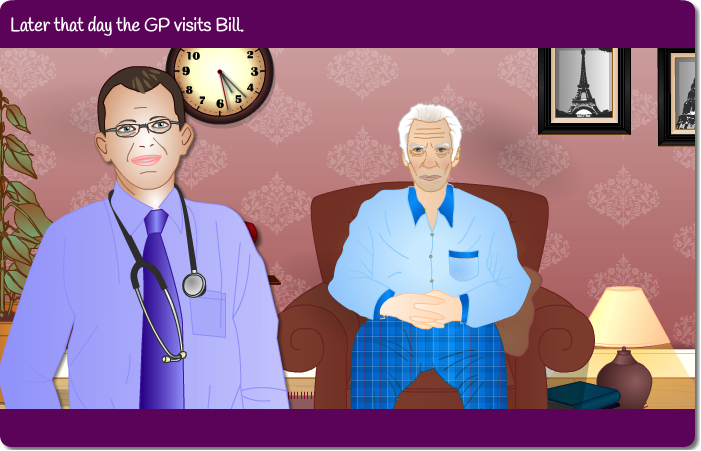
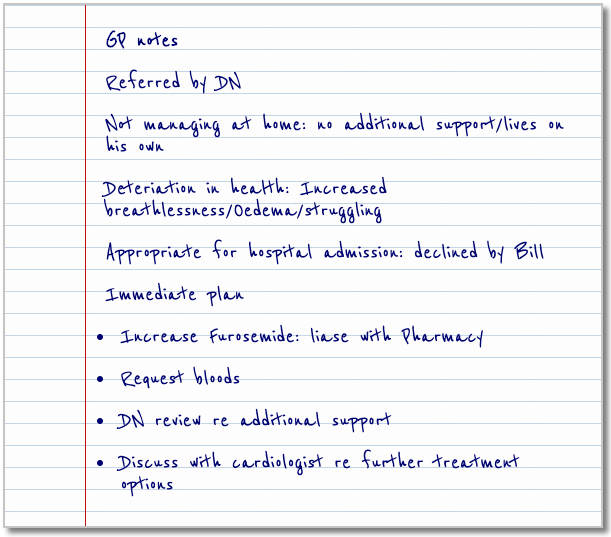
Additional factors that may be considered by the GP to inform an appropriate treatment plan for Bill:
- GP assesses Bill with further physical assessment as appropriate
- GP explores Bill’s perception of current situation
- GP considers reversible causes for deterioration
- GP has established the importance of Bill taking his daily Furosemide medication
- GP advises Bill he will return after discussion with the cardiologist
Multi-disciplinary working is essential, co-ordination is crucial to avoid communication breakdown leading to fragmented care.

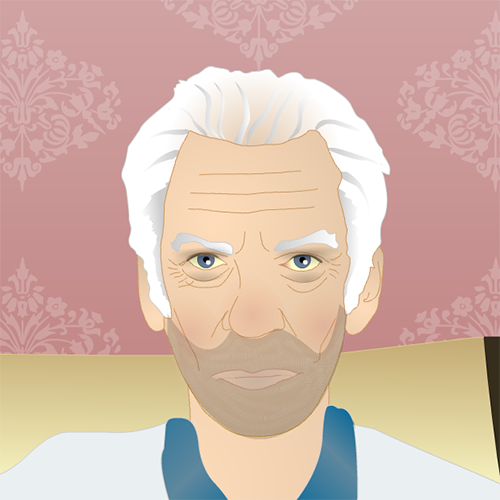
Bill’s journey continues
The path below is being used to help visualise Bill’s journey and the unique contribution that may be required from the wider multi-disciplinary team. Bills journey will now focus on anticipatory care planning discussions. These discussions may include appropriate goals of care, preferred care wishes which may include preferred place of care and place of death.
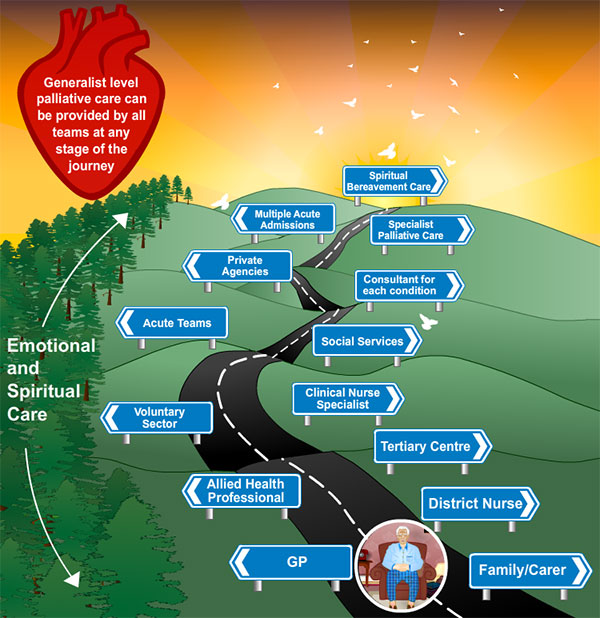
Using the holism philosophy Part 1 has highlighted Bill’s increasing needs and will now help to inform his priorities of care.
The World Health Organization (WHO) defined palliative care as an approach that improves the quality of life of patients and their families facing the problems associated with life-threatening illness, through the prevention and relief of suffering by means of early identification and impeccable assessment and treatment of pain and other problems, physical, psychosocial and spiritual. WHO recommended that planning for care at the end of life should be responsive to patient choice regarding place of care and place of death.
